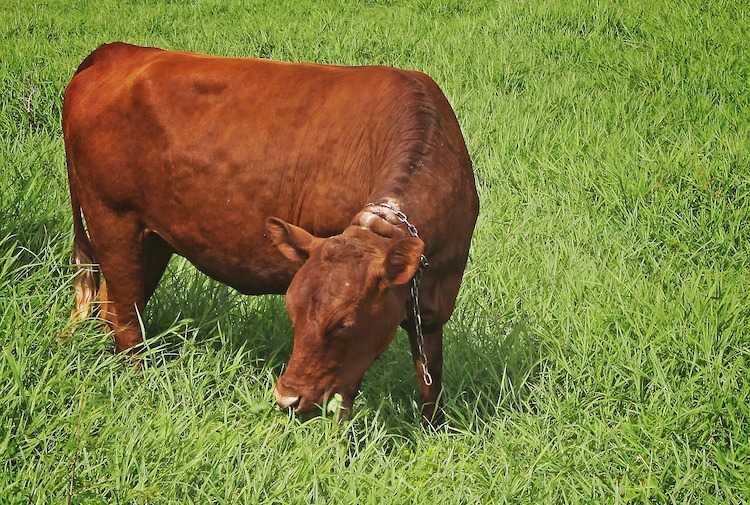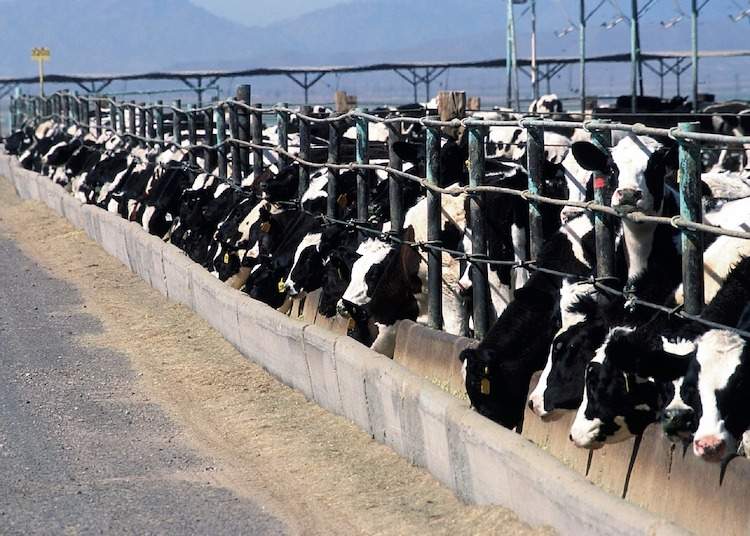The Words “Grass-Fed” Actually Mean Very Little
If you’re concerned about your health, you’re probably concerned about where your food comes from and how it’s grown. You check labels, stay away from packaged junk, and try to buy organic if you can.
When it comes to beef, “grass-fed” is the label you look for. You envision happy cows grazing peacefully on acres of land, eating what cows are supposed to eat—grass. Many beef producers feed their cattle grass for the majority of their lives and then switch to grain or corn toward the end to fatten them up and create the “marbling” effect that supposedly makes their meat taste better. But corn is not a normal food for these animals. Eating grain-finished beef can cause inflammation in the body, leading to a host of problems not in line with a healthy lifestyle.
Sadly, even the “grass-fed” label isn’t enough to tell if the beef you’re buying is really the happy, healthy beef you want.

All Cows Are Grass-Fed
The fact is, cows cannot be raised on grain their entire lives. They must be fed grass. The difference is in the final stage of their lives. This is where a farmer can choose to produce “grain-finished” or “grass-finished” beef by either continuing a grass diet or transitioning to grain.

“Grass-Finished” Doesn’t Mean “Grain-Free”
The labeling system in the United States is unfortunately not always completely accurate. For example, for a product to receive a “USDA Organic” label, it only has to contain 95% organic ingredients. Mostly accurate, but not completely.
You would assume “Grass-Finished” means the cow ate grass for its entire life. This is not always the case. A farmer can technically feed a cow grain for some time and then switch back to grass for the final week and call it “Grass-Finished” and not be completely untruthful. There are no “Grass-Finished” inspectors making rounds of cattle farms making sure everyone is being truthful about their practices—the label is given to whoever claims it.
Most Grass-Fed Beef Is Not Grown In The United States
Another problem with labels is that they describe where a product was packaged, not necessarily where it was grown. Cattle farmers in South America can ship beef to Texas for packaging and slap a “Made in the USA” sticker on it without breaking any laws.
The problem with this is that many countries do not hold their practices to the same standards as the US. The packaging plant in Texas doesn’t travel to South America constantly to check how the cattle is raised, what it’s fed, or how it’s prepared. If the farmer claims “Grass-fed,” it gets a label. No questions asked. This happens all the time and is completely legal.

So Where Can You Get Trustworthy Meat?
It’s tough to make healthy decisions in a world where we are so disconnected from where our food comes from. We want to trust the labels on our food to tell us where it comes from and how it is prepared, but in reality, this is a largely unregulated part of the system.
When it comes to eating beef, the healthiest way to go is with cows fed only grass their entire lives. And sadly, checking labels is not enough to make certain that’s what you’re getting.
You have to dig deeper to find out which companies are actually doing their part to produce ethically raised, true grass-fed beef.
Thrive Market, US Wellness Meats, and White Oak Pastures are all safe bets for finding top-quality meat. They’re reputable farms, or connected with reputable farms, and are dedicated to producing the healthiest meats possible. There are many others, but most aren’t found in your average supermarket.
If health is important to you, then where your food is coming from should be just as important. Continue to read labels, but make sure you take everything with a grain of salt and do your own research. This is the only way you as a consumer can make the most educated choices possible about what to put in your body.
If you’re a true meat aficionado, and have heard a thing or two about the all-meat lifestyle, stay tuned for our upcoming three-part deep-dive into all-things carnivore diet, which will begin to be released in a few short days.
